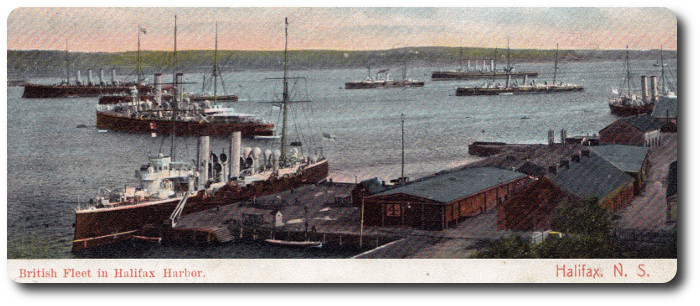Topic: RCN

Build an All-Canadian Navy
Build an All-Canadian Navy is Advice of Lord Jellicoe Given in His Official Report
The Toronto World, 11 March 1920
Ottawa, March 10.—(By Canadian Press).—An all-Canadian navy, preferably directed by a naval board, which will be under the civil control of parliament and of which the minister of the navy will be head, is, in a word, the recommendation of Viscount Admiral Jellicoe, whose report on Canadian naval affairs was tabled in the house of commons by Hon. C.C. Ballantyne this afternoon. The admiral strongly recommends that naval affairs be placed in charge of a minister who will be responsible for them and nothing else. He makes two suggestions with regard to the constitution of the Canadian navy, one designed to satisfy a desire for a navy, which will be engaged merely in the protection of Canadian ports, and the other for a naval organization to cooperate in the general needs of the empire.

Four Alternative Suggestions For a Canadian Battle Fleet
In his report to the Canadian government on naval affairs, Admiral Jellicoe submits four alternative suggestions for a Canadian fleet:
First—Twenty-five million dollar fleet:
- Two battle cruisers,
- seven light cruisers,
- one flotilla leader,
- six destroyers,
- one destroyer parent-ship,
- sixteen submarines,
- one submarine parent-ship,
- two aircraft carriers,
- four fleet minesweepers,
- four local defence destroyers,
- eight "P" boats,
- four trawler minesweepers.
Second—Seventeen and a half million dollar fleet:
- One battle cruisers,
- five light cruisers,
- one flotilla leader,
- six destroyers,
- one destroyer parent-ship,
- one aircraft carrier,
- eight submarines,
- one submarine parent-ship,
- two fleet minesweepers,
- four local defence destroyers,
- eight "P" boats,
- four trawler minesweepers.
Third—Ten million dollar fleet:
- Three light cruisers,
- one flotilla leader,
- eight submarines,
- one submarine parent-ship,
- four local defence destroyers,
- eight "P" boats,
- four trawler minesweepers.
Fourth—Five million dollar fleet:
- Eight submarines,
- four local defence destroyers,
- eight "P" boats,
- four trawler minesweepers.
"Dealing with the question of administration, it is impossible to omit mention of the immense advantages that result from keeping the naval service outside the region of party politics.
"The organization under which the Royal Navy is administered by a board of admiralty has stood the test of time and has, indeed, been followed in this general principle in the present organization of the British war office."

Summarized Conclusions
Summarized the conclusions are:
(A) It is very desirable that there should be a minister for the navy responsible only for that service.
(B) In the event it is suggested that all other seafaring affairs should be conducted by another minister with, perhaps, the title of "The Minister of Marine and Fisheries."
(C) It is proposed that a shipping committee, comprising representatives of shipowners, fishery firms, the marine department, and the naval staff, should meet periodically to consider questions of general development of marine resources. Their functions would be purely advisory in peace, but in war they would take control of shipping, their chairman acting as shipping controller.
(D) A member or branch of the naval staff should be concerned with trade and fishery questions and the war training and the constructional work involved.
On Outbreak of War
(E) On the outbreak of war, in addition to the shipping committee possessing the same powers and functions as the ministry of shipping in England during the late war, the naval staff branch referred to in (D) should carry out the duties of the mercantile movements division.
In this way organizations already existing would be in a position to take up their war-time duties without difficulty or loss of time.
(F) Arrangements concerning the strengthening of hulls to take defensive armament in merchant ships and fishing vessels would be dealt with by this shipping committee, recommendations being made to the director of naval ordnance for the armament when approval was obtained.
(G) It is desirable that a knowledge of naval warfare should form part of the qualifications of merchant service officers for a certificate.
(H) Design of fishing craft should be encouraged along lines tending to efficient auxiliary vessels for naval use in war time, so far as is consistent with their ordinary work.

